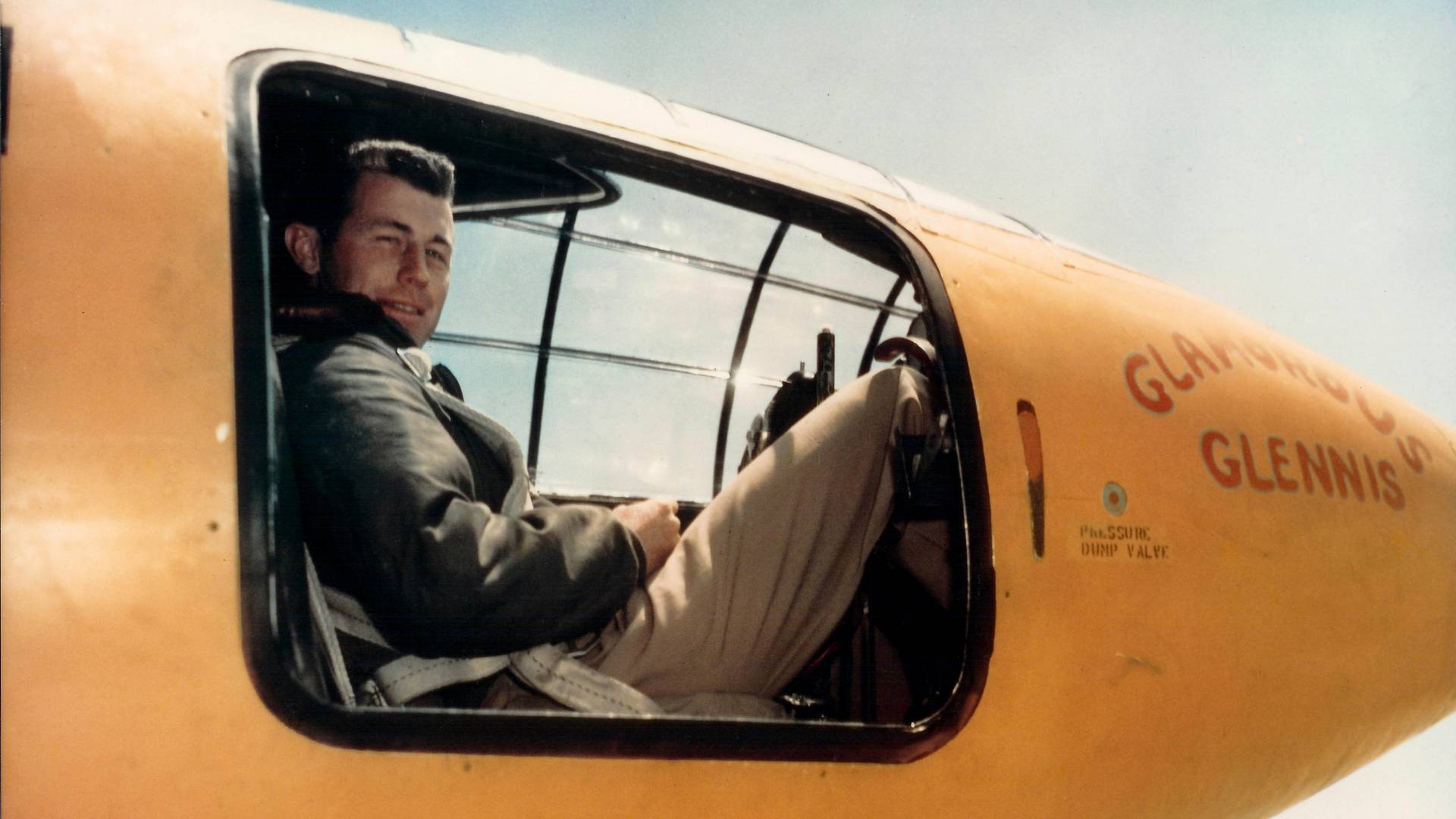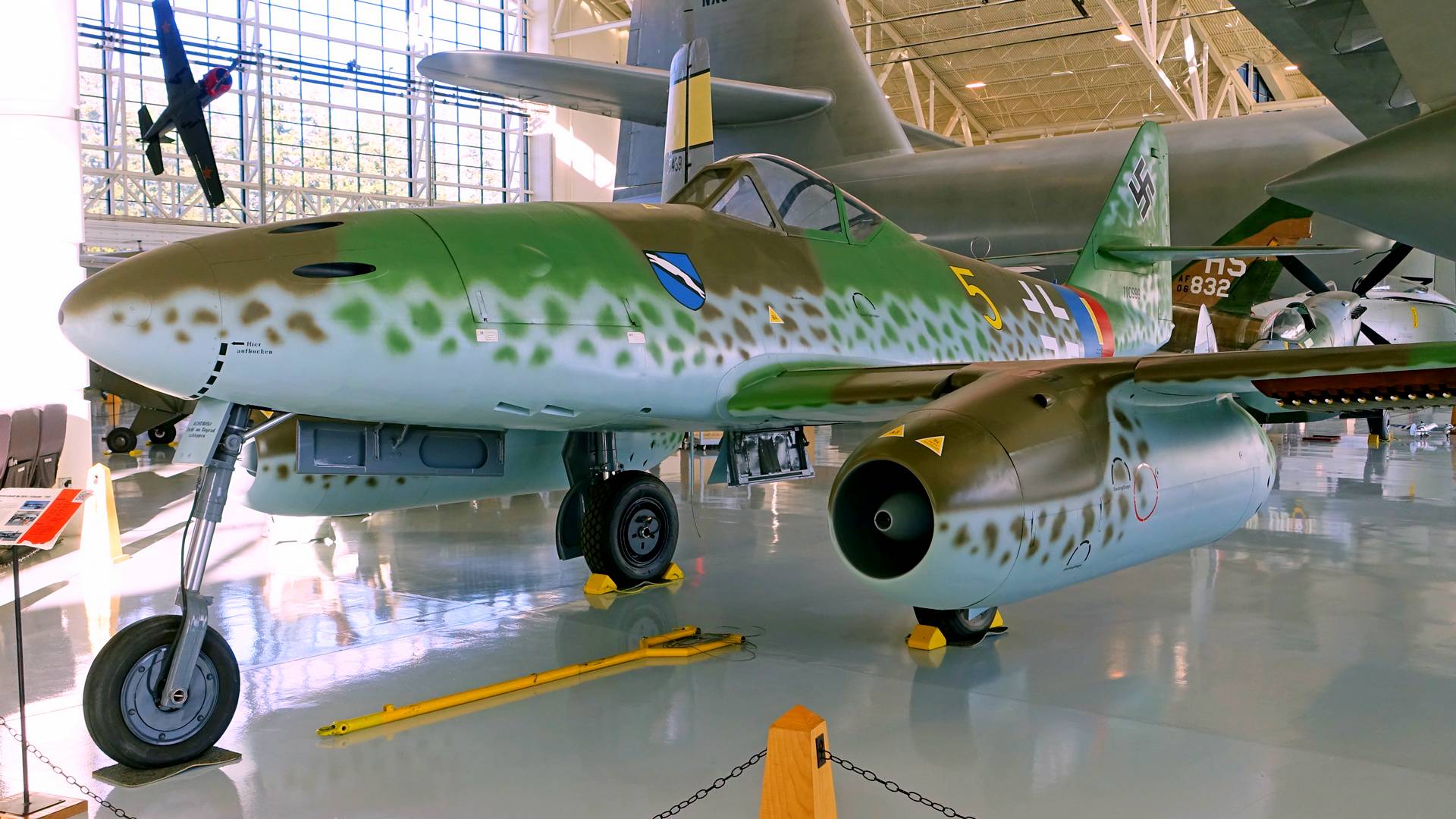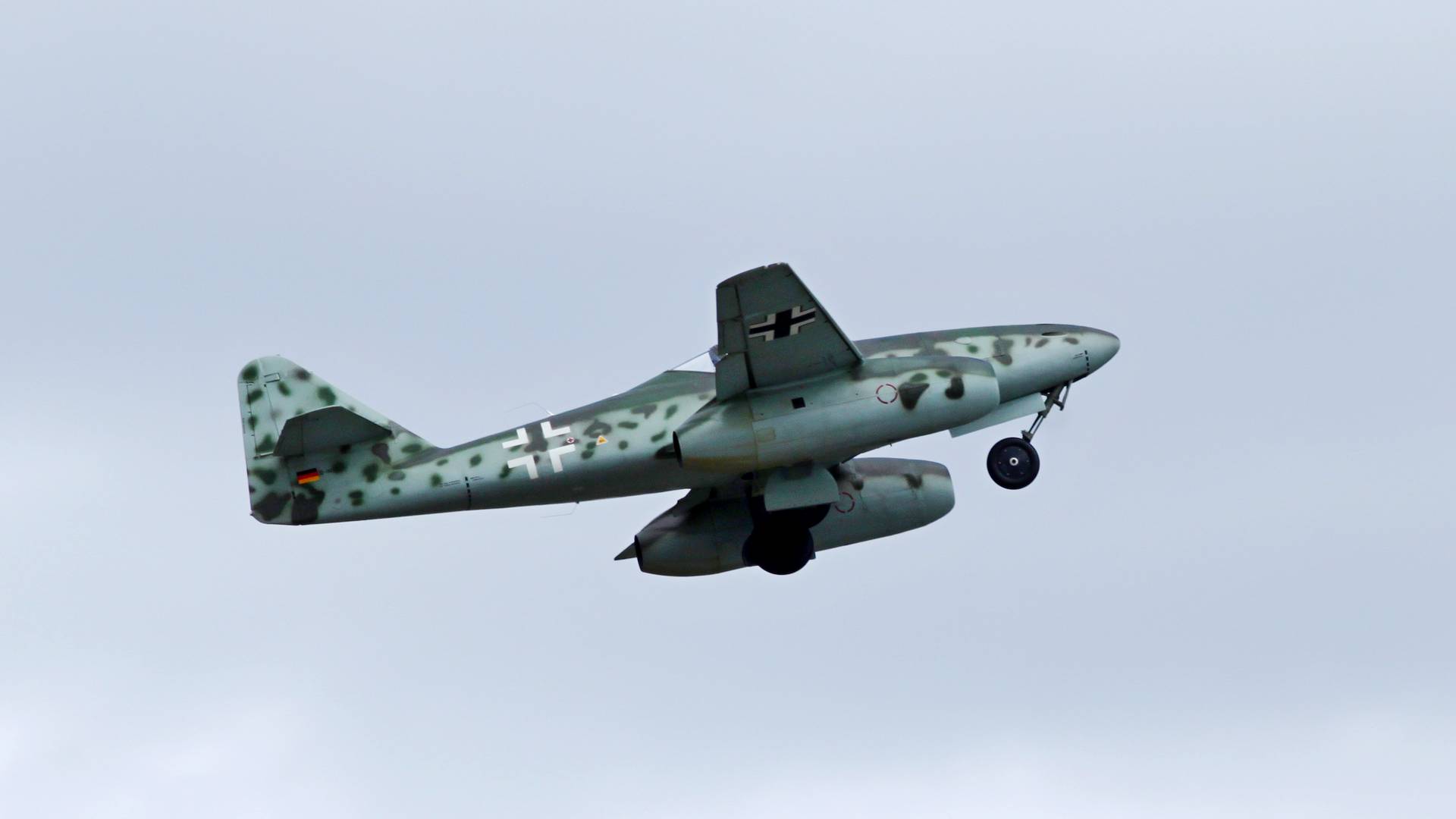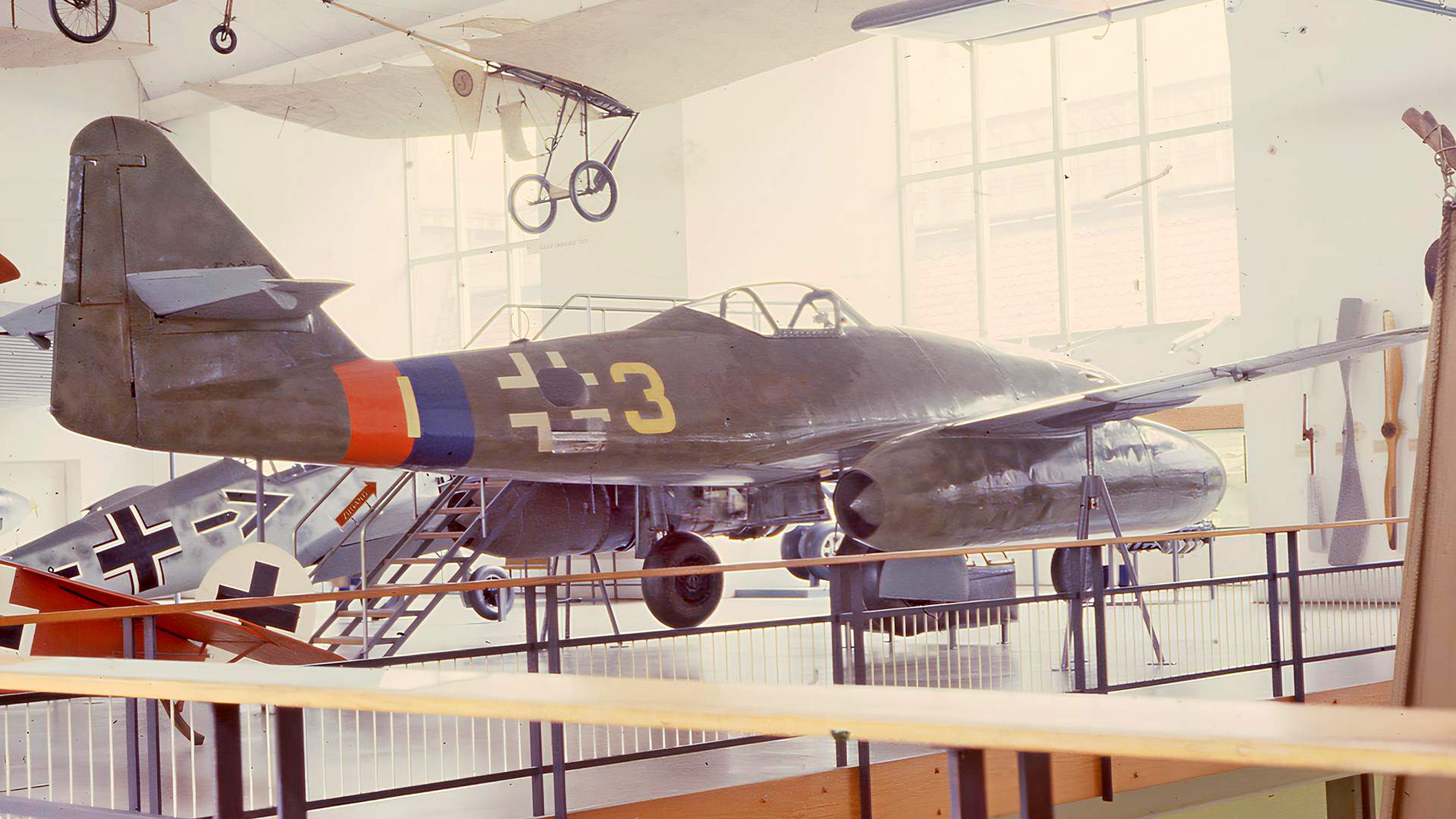The fifth part in a series on the history of how we conquered the sound barrier. Written by Dale J Ferrier
The True Firsts?
The official history tells us that the first faster-than-sound flight by a manned aircraft took place in October 1947 with the Bell X-1 piloted by Chuck Yeager. But, there are claims that in the skies over the ruins of Europe, sonic booms were heard as pilots stumbled into the supersonic realm when, in the desperate dying months of the war, they pushed their machines to the limit.

It’s April 9th 1945 and over Germany, the weather is perfect with over 100km visibility. Up at 36,000ft a pilot named Fahnrich (Candidate Officer) Hans Guido Mutke is at the controls of his Messerschmitt Me262 Schwalbe Jet, one of Germany’s most advanced fighters and its first operational jet. Powered by two BMW Juno engines, the 262 could simply outpace its older propeller-driven contemporaries making it a powerful interceptor and difficult to catch.
Mutke must have been proud to have been given command of this new powerful machine. Starting his career on Dornier 217s and Messerschmitt Bf110s in 1942, Mutke was no rookie and in 1945, he was transferred to the Operational Fighter Training Group 2 to train on the 262.
It was on that fateful day he was flying a training mission and out of the pristine Spring air the voice of Luftwaffe ace Obersleutnant Heinrich Bar sounded over the radio. Far below a fellow 262 was being pursued by a single, and also highly capable, P-51 Mustang. Mutke knew he had to come to the aid of his comrade. So he pushed his 262 over in a hard left roll and began a steep dive with his engines at full throttle. The airspeed shot up reaching 1,100kph and soon the jet began to shake violently, pitching down even further. Then Mutke noticed that rivets had begun popping out of the wings – his 262 was beginning to disintegrate.

Mutke knew he had to act before his jet broke apart around him. He adjusted the incidence of the tailplane and briefly the shaking ceased, before restarting. He then only escaped his dangerous situation once he slowed down. When he landed back at base, the engineers were amazed at the condition of the jet which they described as looking like it had been shaken by a giant. Mutke’s superiors were less than impressed and demanded to know if he’d exceeded the maximum 950kph allowed, which he denied suggesting that this jet must have been “a Monday job” – a satirical reference to the drop in quality at the factories when the workers returned from a weekend of drinking.
At the time, Mutke saw no significance in his eventful flight and only came to consider that he may have briefly exceeded the Speed of Sound after hearing accounts of those who officially did. Those accounts which described violent buffeting before a sudden calm seemed to match Mutke’s experience in the 262. Moreover, Mutke never claimed to be the first either, saying that a few of his colleagues had experienced similar events.
It is impossible to say for certain whether Mutke did indeed go supersonic that April day in 1945, but that hasn’t stopped some from finding out if the 262 could have even managed it. Supporters of Mutke’s claims often cite a USAAF handbook from January 1946 created from test flights with captured 262s after the war. It states that between 950 and 1,000kph, airflow around parts of the aircraft reaches the Speed of Sound and renders the controls ineffective – covered earlier with Critical Mach. However, it continues suggesting that once the Speed of Sound has been exceeded, normal control can be resumed.

On the surface, this appears to support what Mutke experienced. But the handbook was written sometime before Yeager’s flight in the X-1 – the official first supersonic flight – and so cannot be reliably deemed to be referring to genuine supersonic flight. Messerschmitt’s own development testing determined that 262 was capable of reaching Mach 0.86 before the aircraft became uncontrollable.
In an attempt to verify his claims, Mutke enlisted the help of Professor Otto Wagner at the Munich Technical University in 1999 who ran a series of computer simulations to see if the 262 could do it. Professor Wagner determined that although the 262 may have been capable of surpassing Mach 1, and that he wishes not to exclude the possibility that Mutke did, he believes that on that flight he got close but didn’t actually exceed the Speed of Sound. I suggest that adjusting the tailplane may have briefly alleviated the effects of the high-speed dive, but the jump from Mach 0.86 (which Messerschmitt suggests as the speed the buffeting arises) to Mach 1 is quite significant and in all probability wasn’t covered by Mutke.
Mutke’s dive wasn’t the only eventful flight in his career. Two weeks before the German surrender, he flew another 262 to Switzerland and once the war ended, claimed ownership of it. His claim was never granted and Switzerland returned the 262 in 1957 where it remains to this day on display at the Deutsches Museum in Munich. Mutke maintained his claims of both exceeding the Speed of Sound and the ownership of the Swiss 262 until his death in 2004.

Pilots of Me262s were not the only ones to claim that they had gone supersonic. In 1942 the pilot of a P-47 Thunderbolt claimed that he had exceeded Mach 1, but this was dismissed as instrument error. The problem for many pilots in those days when it came to flying near the Speed of Sound was that their instruments were not equipped for it. There is a phenomenon called Mach Jump, which is when approaching the Speed of Sound the airspeed indicator can ‘jump’ to a higher reading, sometimes tricking unsuspecting pilots into believing they are flying faster than they really are. Today, Mach meters either on the ground or in the aircraft are equipped to deal with these transonic issues.
Back in the skies over Europe, another German wonder weapon would plant its claim of going supersonic. The Messerschmitt Me163 Komet was a rocket-driven interceptor that first flew in 1941. Early on it proved to have impressive speed performance, but using a rocket meant that it had an undesirable habit of blowing up and killing its pilot. That aside, its incredible speed allowed Heini Dittmar to set a speed record on July 6th 1944 when he achieved 1,130kph which would not be surpassed until 1947 by the Bell X-1. Dittmar’s friend Mano Ziegler claims that during this flight he managed to exceed Mach 1 and that several people on the ground heard a ‘boom’.

Although Dittmar did indeed fly very fast, it is unclear that his altitude (and the subsequent reduction in the Speed of Sound) was sufficient for the 1,130kph recorded to be in fact supersonic. Whether or not Dittmar did achieve Mach 1, flying at the speeds he did wasn’t without great risk. An image from the time shows a 163 registration BV18 with its rudder torn to shreds supposedly from high-speed flutter. There is however some degree of uncertainty. William Green’s 1971 book Rocket Fighter places the image as being the same day as Dittmar’s flight but piloted by a Rudolph Opitz. Whereas a later 2002 book by Ransom and Cammann placed the image as being on December 23rd 1943 although indeed flown by Dittmar.

The 163 was certainly very fast and likely had the power to reach Mach 1. The biggest issue with it however was the aircraft itself. The 163 was designed to be fast, but not supersonic, and as we can deduce from the destroyed rudder image, it is unlikely that the 163 would have survived the aerodynamic forces inflicted upon it at the Speed of Sound.
There are other claims of pilots going supersonic before Yeager – each deserving of their inclusion here – and machines were achieving over Mach 1 at the time. The German V2 rocket would routinely reach Mach 4 before striking London suburbs. But, the cases described do help demonstrate that by the 1940s, aircraft were becoming fast enough to be on the brink of entering the supersonic range.
End of Part V



